How To Insulate a Camper Van
So you’ve made the first step and you’ve acquired a van. Now you would like to transform it into something more luxurious than a tent. There is a lot of information online about how to insulate a campervan. No doubt you have a lot of questions about the best method how best to do it, well you aren’t alone!
Although there is a lot of room for creativity when converting your campervan, there is one step that is crucial to the long-term comfort and function of your vehicle, if done incorrectly can lead to complications later. And that’s the insulation! Some of the most common methods are to use rigid boards, fibre insulation and ‘foil’ bubble wraps. All these options are very messy, have varying degrees of difficulty and often produce a lesser outcome.
So we decided to get together with the guys at BSG Campers to answer some of our most frequently asked questions, and get some top tips from a professional campervan installer. Barry from BSG Campers who has a wealth of camper conversion experience and has helped us develop this Introduction to Insulating a Campervan. And a step-by-step guide to give you all the information you will need regarding why and how you should properly insulate your vehicle and get your campervan on the move!
*Although the van referenced here and in our Step-by-Step guide is a VW T5, if you understand and follow these principles, it doesn’t matter what van you are insulating.
Some of our FAQs concerning insulating a campervan are;
- Why insulate a campervan?
- What is the best sound deadening for a van?
- How do I stop condensation in my campervan?
- Does a campervan need a Vapour barrier?
- What is the best insulation for a campervan?
- Can you use loft insulation in a campervan?
- What’s the best type of insulation to use for a campervan conversion?
- How much insulation do I need?
First of all we are going to ask the question – Why Insulate a campervan?
It may seem obvious but insulating a campervan is important for several reasons beginning with the comfort of the occupants. But it is not just about stuffing insulation into the van. You want to make sure the van is warm in the winter and cool in the summer. You want to reduce the risk of condensation forming in the van, and on metal surfaces which could lead to rust. You will also want to reduce sound transmission and road noise.
The type of insulation you use is important but where it is installed, and how its installed, are equally important.
My top tip to anyone insulating vehicle is; build from the ground up! There is no point in put thousands into converting a vehicle and trying to save a few hundred quid on insulation which will undoubtedly lead to problems later!
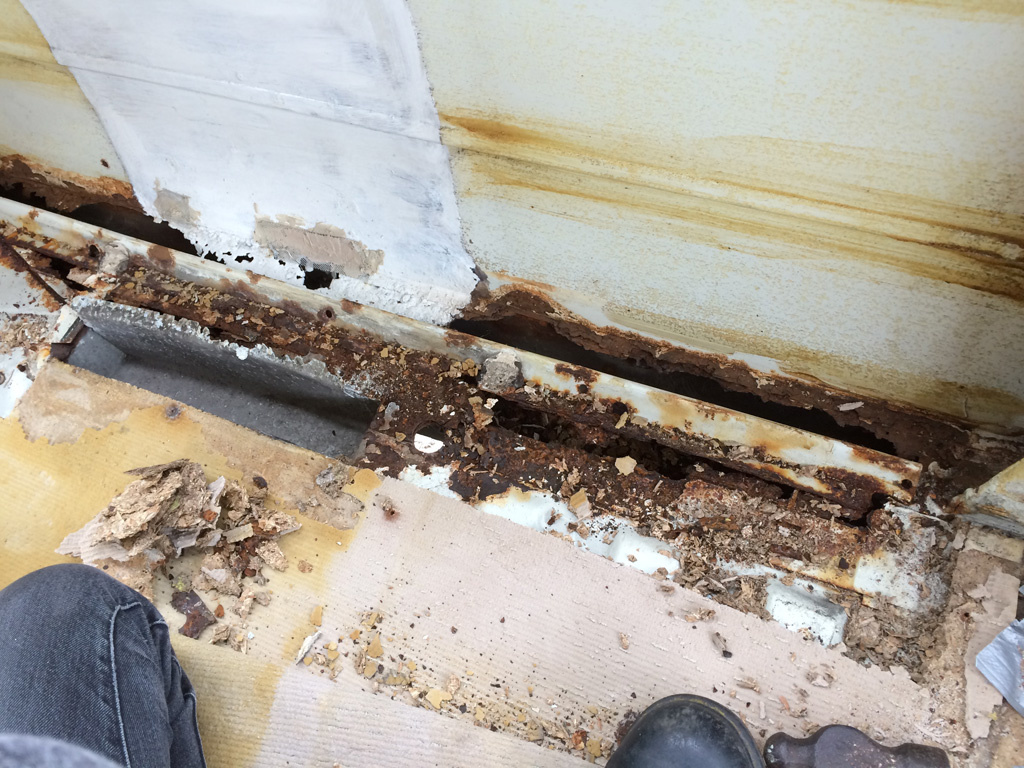
What is the best sound deadening for a van?
We’ll start here with sound transmission. There are a number of different way sound can transmit in a vehicle. Airborne noise is not the same as road or vibration noise. Therefore, I would always recommend using a combination of materials to deal with the different tasks. A specialized material to stop vibration and road noise (such as Quack Mat*) along with a layer of Low-E Insulation layered over the top.
*This is NOT a sponsored link.
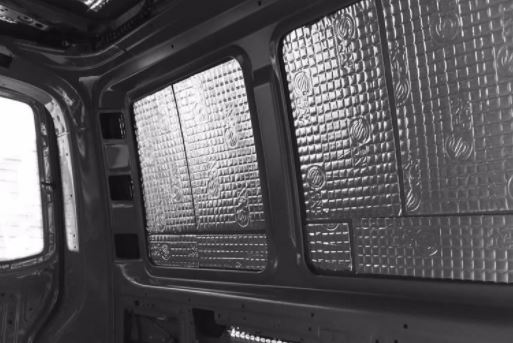
How do I stop condensation in my campervan?
In a campervan it’s almost impossible to avoid producing moisture which is created in many ways including the use of heaters, cooking stoves and even the breath of passengers! Condensation forms when the warm and cold fronts meet. In a camper this usually happens on the exterior panels because this is where there is the greatest difference in temperature. You want to reduce the chance of moisture or condensation forming in the vehicle or behind the ply lining panels by reducing the thermal bridging in the vehicle.
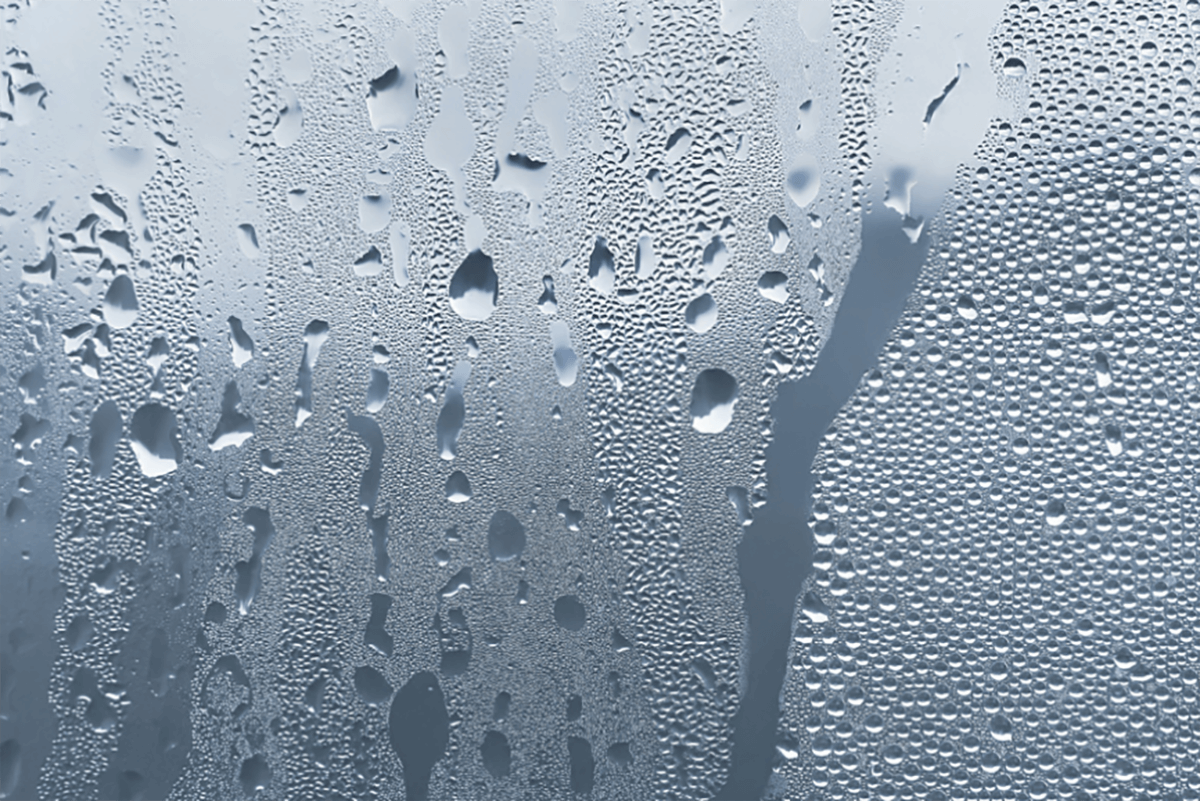
Thermal Bridging
Hot air moves to cold by the path of least resistance and any gaps in your insulation, contact points and fixings are known as ‘thermal bridges’, which will be the areas of greatest heat-loss from your vehicle. High quality insulation materials and proper installation are the key to a comfortable camper!
Ventilation is also an important part of any campervan project as this will allow any warm, moist air to escape before it has time to condense. The combination of insulation, a moisture barrier and ventilation is the best approach towards protecting your camper from moisture damage by reducing warm air from reaching the cold metal and condensing.
Water + Metal = RUST!
Ventilation is also an important part of any campervan project as this will allow any warm, moist air to escape before it has time to condense. The combination of insulation, a moisture barrier and ventilation is the best approach towards protecting your camper from moisture damage by reducing warm air from reaching the cold metal and condensing.
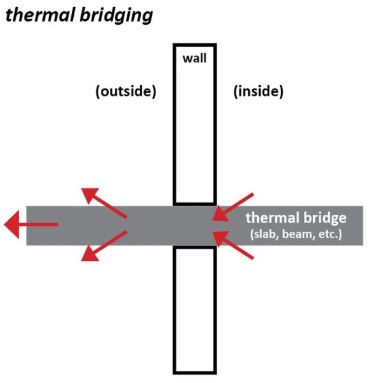
Does a campervan need a Vapour barrier?
I would highly recommend installing a vapour barrier in a campervan to reduce the risk of moisture getting into the cavity. You can’t guarantee that no moist air will escape through openings, fixtures or gaps, therefore I would always recommend using insulation materials that won’t absorb moisture.
What’s the best type of insulation for a campervan?
The most common insulating materials available are normal housing insulation. Rigid foam (PIR Insulation), or wool insulation (glasswool, rockwool or sheepswool), rubber foam (like thick swimming float), but my personal favourite is Low-E Insulation, a high-spec reflective foil with a recycled closed cell foam core.
I don’t use anything else but it is worth noting that Low-E insulation can be installed on its own, or with any of these additional secondary insulation. You can always use a combination of materials if you wish, depending on the part of the van you are insulating. However just be aware of moisture build-up!
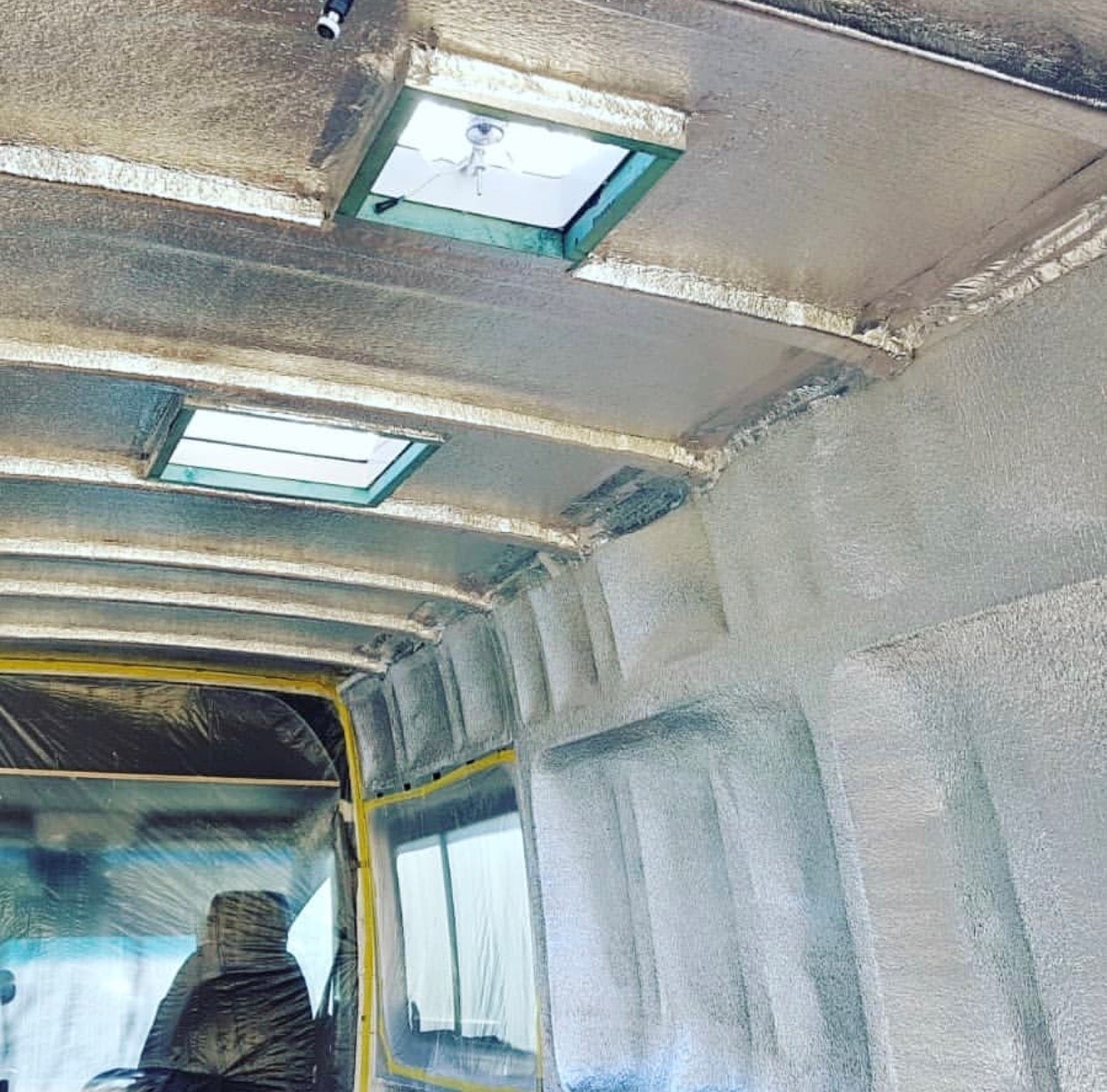
Can you use loft insulation in a campervan?
Fibreglass is a very good insulator, and it can be stuffed easily into awkward spaces but there are problems with its use. One problem with fibrous products is that their microfibers can negatively affect indoor air quality. That’s not so good if you’re sleeping in close quarters next to the product, as in a camper van.
Sheep wool is perfect for bunging into all the large cavities in your camper and has less health risks associated with its use. The biggest risk with ALL fibrous products is that they can absorb moisture. If they get damp and are sitting against the body of the vehicle (which cannot breath), they are bound to cause the vehicle to corrode.
However, if you install a vapour barrier (VCL), or even better a reflective insulation, then this is less problematic as the fibres are a lot less likely to get airborne in the vehicle and can reduce the risk of moisture passing into the fibrous material. I do not recommend using a plastic sheet as a VCL. It is too easy to damage and if the VCL fails or gets damaged, you are going to have serious problems later on!!
Rigid insulation boards are becoming more and more popular and there is no question that they are great insulators, providing you have the space for them. The main reasons they aren’t used in camper projects are that they ‘off’ gases which can be harmful and the environment and they can be messy to install, not fitting around curves, over struts or into small cavities. Using difficult to install rigid boards increases the likelihood of creating thermal bridges.
I would also be concerned about the environmental implications of using solid boards in a van as there would likely be a lot of waste which cannot be recycled, incinerated or put into landfill. There are also increasing reports of these products ending up in our oceans!
Bubble Wraps are predominantly made from what is called Mylar, not aluminium. A lot of them claim to be made from aluminium but please check that there is accreditation testing on these products.
Mylar is fine for wrapping a kit-kat or a packet of crisps but it is not suitable for insulating. Its tends to crack, chip, peel and fade. I end up removing this stuff from vehicles all the time. I honestly believe these companies that are supplying this stuff don’t really realise what they are selling or how it works (or doesn’t work).
The supply (of bubble wrap) actually said to me “It doesn’t work as well, and it won’t stand the test of time but if customers want it, we’ll supply it.”
Using reflective foil insulation in your campervan
Low-E Reflective insulation is not like traditional insulation materials. It works by reflecting heat into an airspace beside the foil surface. And its easy to create these airspaces in a campervan.
Low-E Insulation works by reflecting heat, unlike things like glass wool which works by absorbing heat (and moisture). Another huge advantage of Low-E Insulation is that it’s so thin. It cuts simply with a knife and can be handled and installed without any safety equipment. It moulds easily around irregular shapes (of which there are MANY in a van).
A world apart from either stuffing glass-wool into gaps and then having itchy arms for a week, or trying to cut thick bits of board or foam to fit over awkward bits of the van and then realising your panels won’t fit back over the top!

The Pro’s and Con’s of traditional insulation materials?
Fibreglass is a very good insulator, and it can be stuffed easily into awkward spaces but there are problems with its use. One problem with fibrous products is that their microfibers can negatively affect indoor air quality. That’s not so good if you’re sleeping in close quarters next to the product, as in a camper van.
Sheep wool is perfect for bunging into all the large cavities in your camper and has less health risks associated with its use.
The biggest risk with ALL fibrous products is that they can absorb moisture. If they get damp and are sitting against the body of the vehicle (which cannot breath), they are bound to cause the vehicle to corrode.
However, if you install a vapour barrier (VCL), or even better a reflective insulation, then this is less problematic as the fibres are a lot less likely to get airborne in the vehicle and can reduce the risk of moisture passing into the fibrous material. I do not recommend using a plastic sheet as a VCL. It is too easy to damage and if the VCL fails you are going to have problems.
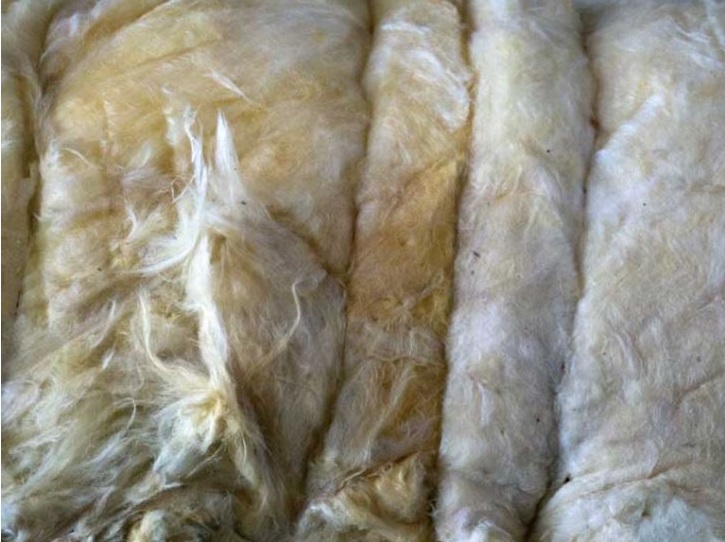
Rigid Insulation Boards
Rigid insulation boards are becoming more and more popular and there is no question that they are great insulators, providing you have the space for them. The main reasons they aren’t used in camper projects are that they ‘off’ gases which can be harmful and the environment and they can be messy to install, not fitting around curves, over struts or into small cavities. Using difficult to install rigid boards increases the likelihood of creating thermal bridges.
I would also be concerned about the environmental implications of using solid boards in a van as there would likely be a lot of waste which cannot be recycled, incinerated or put into landfill. There are increasing reports of these products ending up in our oceans!
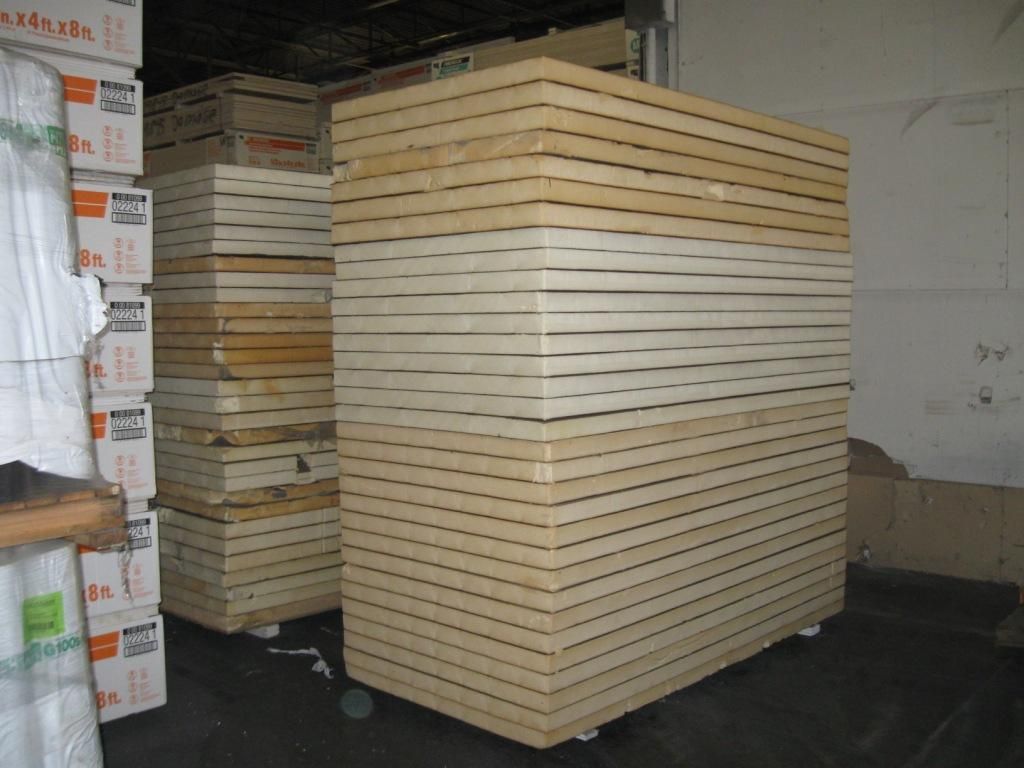
Bubble Wraps
Bubble Wraps are predominantly made from what is called Mylar, not aluminium. A lot of them claim to be made from aluminium but please check that there is accreditation testing on these products.
Mylar is fine for wrapping a kit-kat or a packet of crisps but it is not suitable for insulating. Its tends to crack, chip, peel and fade. I end up removing this stuff from vehicles all the time. I honestly believe these companies that are supplying this stuff don’t really realise what they are selling or how it works (or doesn’t work).
The supply (of bubble wrap) actually said to me “It doesn’t work as well, and it won’t stand the test of time but if customers want it, we’ll supply it.”
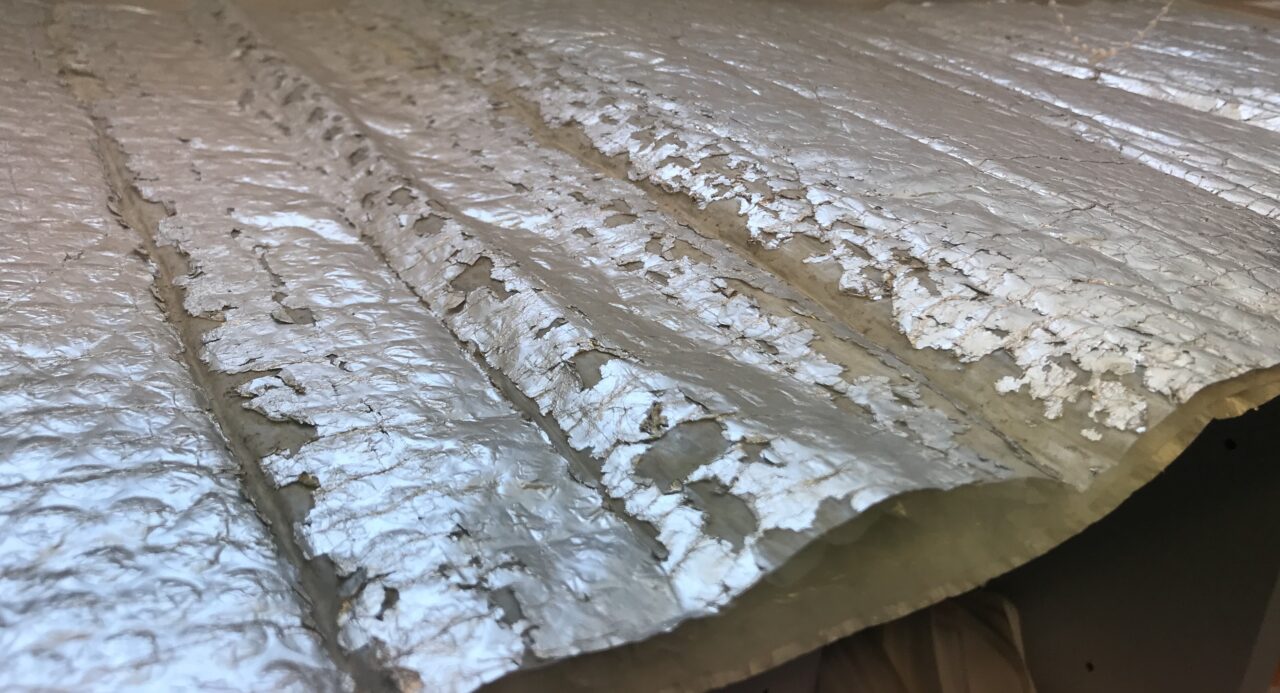
Using reflective foil insulation in your campervan
Low-E Reflective insulation is not like traditional insulation materials. It works by reflecting heat into an airspace beside the foil surface. And its easy to create these airspaces in a campervan.
Low-E Insulation works by reflecting heat, unlike things like glass wool which works by absorbing heat (and moisture). Another huge advantage of Low-E Insulation is that it’s so thin. It cuts simply with a knife and can be handled and installed without any safety equipment. It moulds easily around irregular shapes (of which there are MANY in a van).
A world apart from either stuffing glass-wool into gaps and then having itchy arms for a week, or trying to cut thick bits of board or foam to fit over awkward bits of the van and then realising your panels won’t fit back over the top!
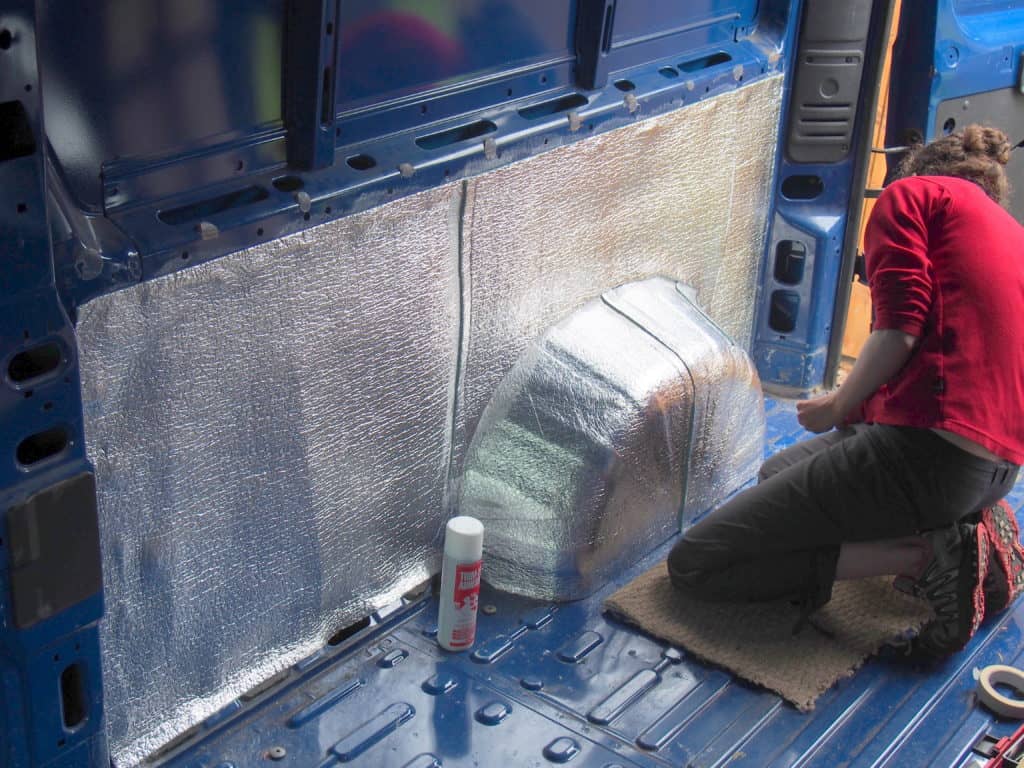
How much insulation do I need?
It can be difficult to calculate exactly how much insulation you will need for your camper project. Taking all internal measurements will give you a good idea, however, consider any windows or other areas that may not be insulated.
I recommend overestimating the amount that you will need as it is better to have a little too much than be left short.
The image below gives a general guideline for how much insulation is required in the most common van models.
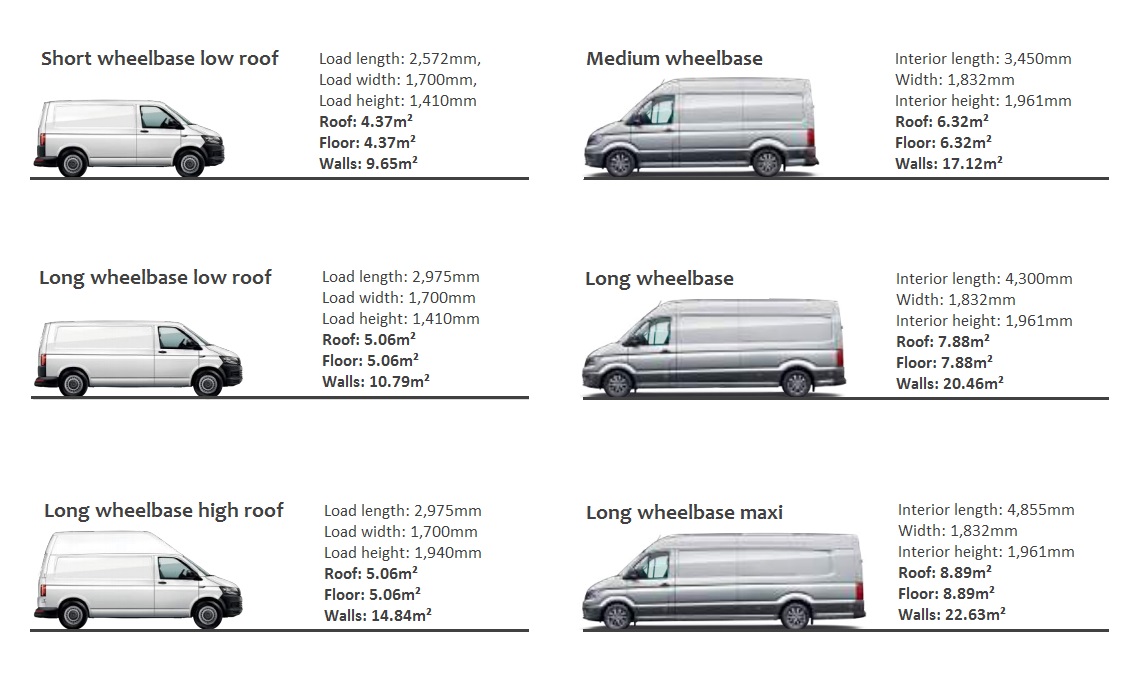

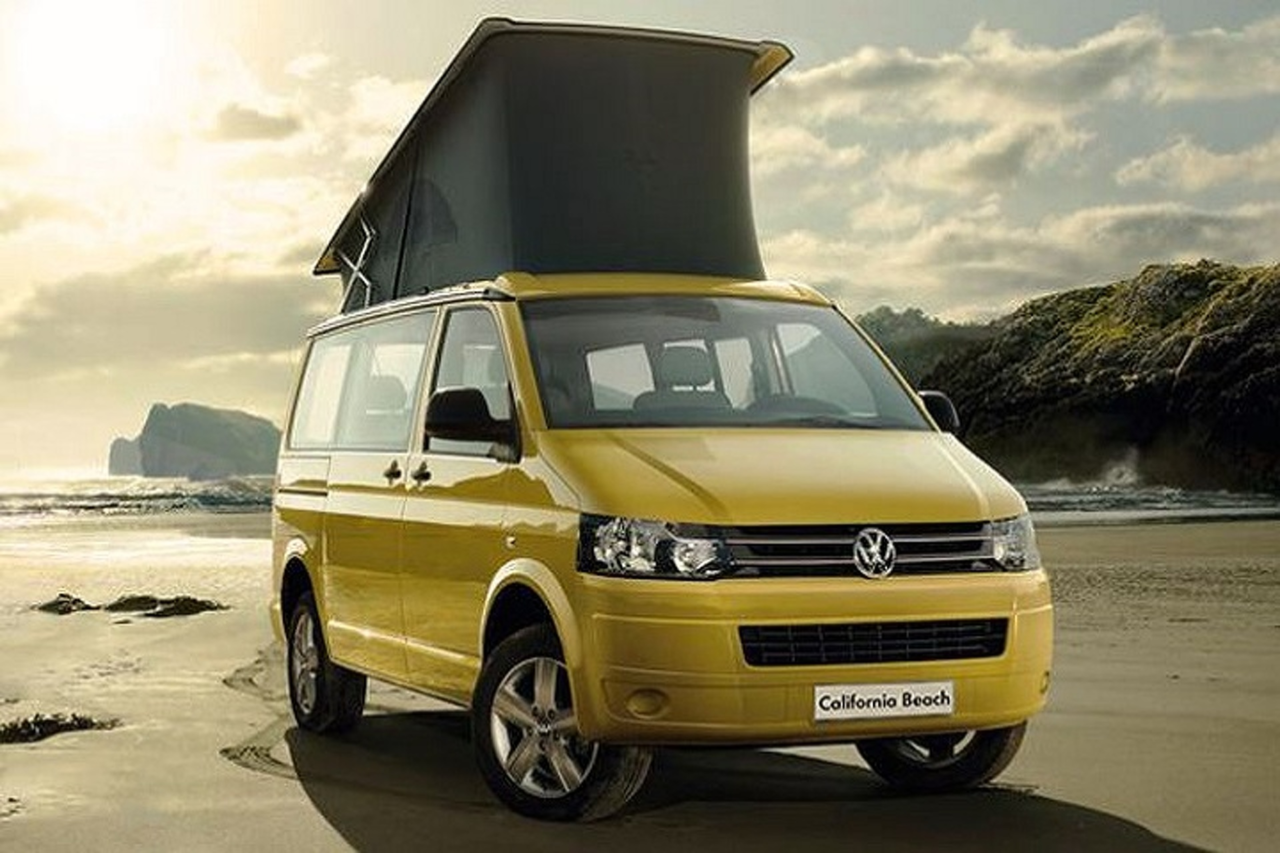
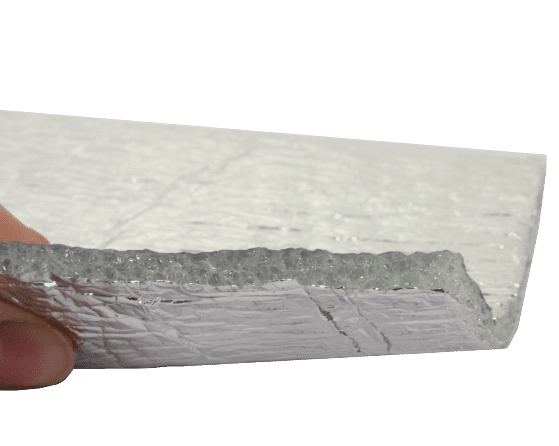


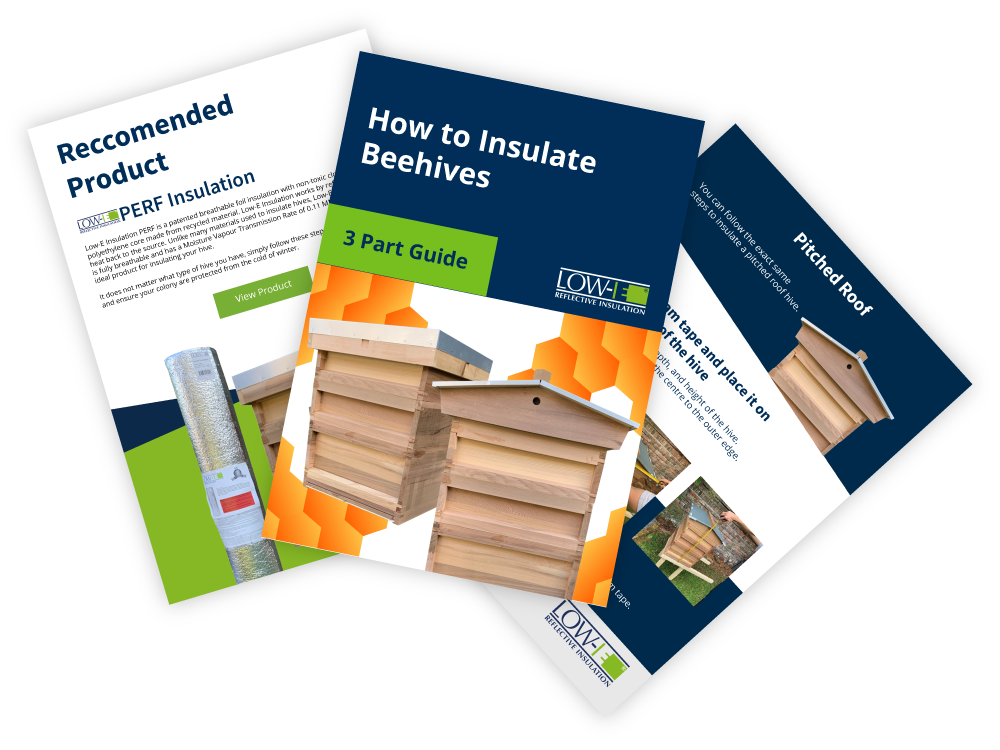
Recent Comments